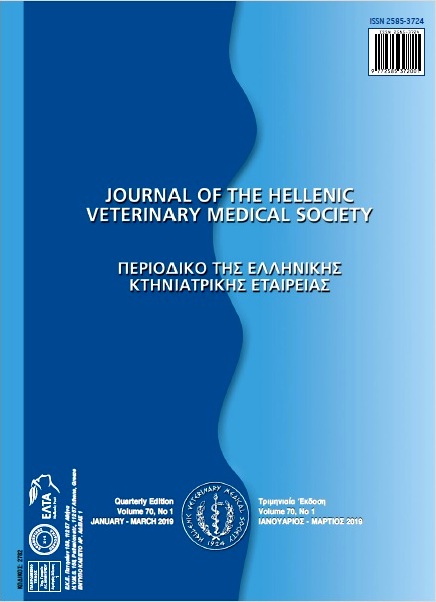Effects of Rapid and Ultra-Rapid Fluid Resuscitation Guided by Blood Lactate Clearance Rate in Diarrheic Calves
Resumen
The assessment of the results of intravenous fluid treatment in diarrheal calves is difficult under field conditions. To determine the effects of ultra-rapid (1 h) and rapid (3 h) intravenous infusions with 0.9% NaCl and 1.3% NaHCO3 solutions at a dose of 60 ml/kg on lactate clearance (LC) in calves with diarrhea. Sixty calves, including a healthy control group (n=20) and a group of calves with diarrhea (n=40), were used. Diarrheic calves were divided into two groups (n=20) according to solution type, and each group was then divided into two equal subgroups according to the infusion rate (n=10). Clinical and laboratory inspections of diarrheic calves were performed pre- and post-infusion, and the healthy control group was examined once. LC rates were calculated in the 1 h and 3 h subgroups. Marked improvements in clinical findings related to dehydration were observed in all groups with neonatal diarrhea that were given intravenous infusions with 0.9% NaCl and 1.3% NaHCO3 solutions. End of the infusion, the LC of the 0.9% NaCl and 1.3% NaHCO3 solutions in the ultra-rapid groups was significantly increased by 36.4% and 31.8%, respectively. However, for rapid infusion of the same solutions, 13.6% and 31.8% increases were observed, but the differences were not significant. Under field conditions, the LC of L- and D-lactate varied with the infusion rate, and these variations were significant in ultra-rapid subgroups for both solutions. Further studies will be designed for fluid therapy in calves based on the calculation of LC.
Article Details
- Cómo citar
-
ERDOGAN, H., & VOYVODA, H. (2019). Effects of Rapid and Ultra-Rapid Fluid Resuscitation Guided by Blood Lactate Clearance Rate in Diarrheic Calves. Journal of the Hellenic Veterinary Medical Society, 70(1), 1413–1420. https://doi.org/10.12681/jhvms.20349
- Número
- Vol. 70 Núm. 1 (2019)
- Sección
- Research Articles

Esta obra está bajo una licencia internacional Creative Commons Atribución-NoComercial 4.0.
Authors who publish with this journal agree to the following terms:
· Authors retain copyright and grant the journal right of first publication with the work simultaneously licensed under a Creative Commons Attribution Non-Commercial License that allows others to share the work with an acknowledgement of the work's authorship and initial publication in this journal.
· Authors are able to enter into separate, additional contractual arrangements for the non-exclusive distribution of the journal's published version of the work (e.g. post it to an institutional repository or publish it in a book), with an acknowledgement of its initial publication in this journal.
· Authors are permitted and encouraged to post their work online (preferably in institutional repositories or on their website) prior to and during the submission process, as it can lead to productive exchanges, as well as earlier and greater citation of published work.



